Description
Decreasing CO2 Emissions By Reducing Tire Rolling Resistance
Prof, D Sc. (eng.) Jerzy Ejsmont, D Sc. (eng.) Beata Świeczko-Żurek
ABSTRACT: The first motor vehicle was built by Nicolas Cugnot almost 250 years ago and since then there has been a continuous process of motor vehicles’ improvements, as well as development of new road pavements. The fuel crisis of the 70s of the 20th century made it clear to vehicle builders that measures should be taken to reduce vehicle fuel consumption and it contributed to an increased interest in electric vehicles. Although significant progress has already been made in reducing fuel consumption by internal combustion vehicles, at the turn of the 20th and 21st centuries, a new challenge has arisen, namely the need to reduce CO2 emissions. To achieve this, both the need to build more ecological friendly sources of propulsion and to significantly reduce the vehicle’s resistance, have to be addressed. This paper deals with one of the most important sources of vehicle resistance – the rolling resistance. Rolling resistance is a phenomenon that occurs at the tire’s interface with the roadway and depends on the tire construction, pavement parameters, vehicle operating parameters and atmospheric conditions. The paper presents how big is the influence of rolling resistance on overall energy consumption of road vehicles and how to evaluate rolling resistance, especially in real road conditions.
Rolling resistance is very difficult to measure, so it is common to use simplified methods, which do not always provide representative results. The paper presents an overview of rolling resistance research methods, their advantages and disadvantages and the impact of the most important parameters of tires, pavement and traffic conditions on tire rolling resistance. Special attention is given to the problem of implementing proper procedures during road measurements of rolling resistance as road measurements are not standardized yet, despite the fact that, if performed correctly, they may give the most representative and precise results leading to improvements of pavements and tires. The results of rolling resistance tests conducted on rubber modified asphalt and on porous surfaces are also presented.
KEYWORDS: tires, rolling resistance, measuring methods, CO2, fuel consumption, texture.

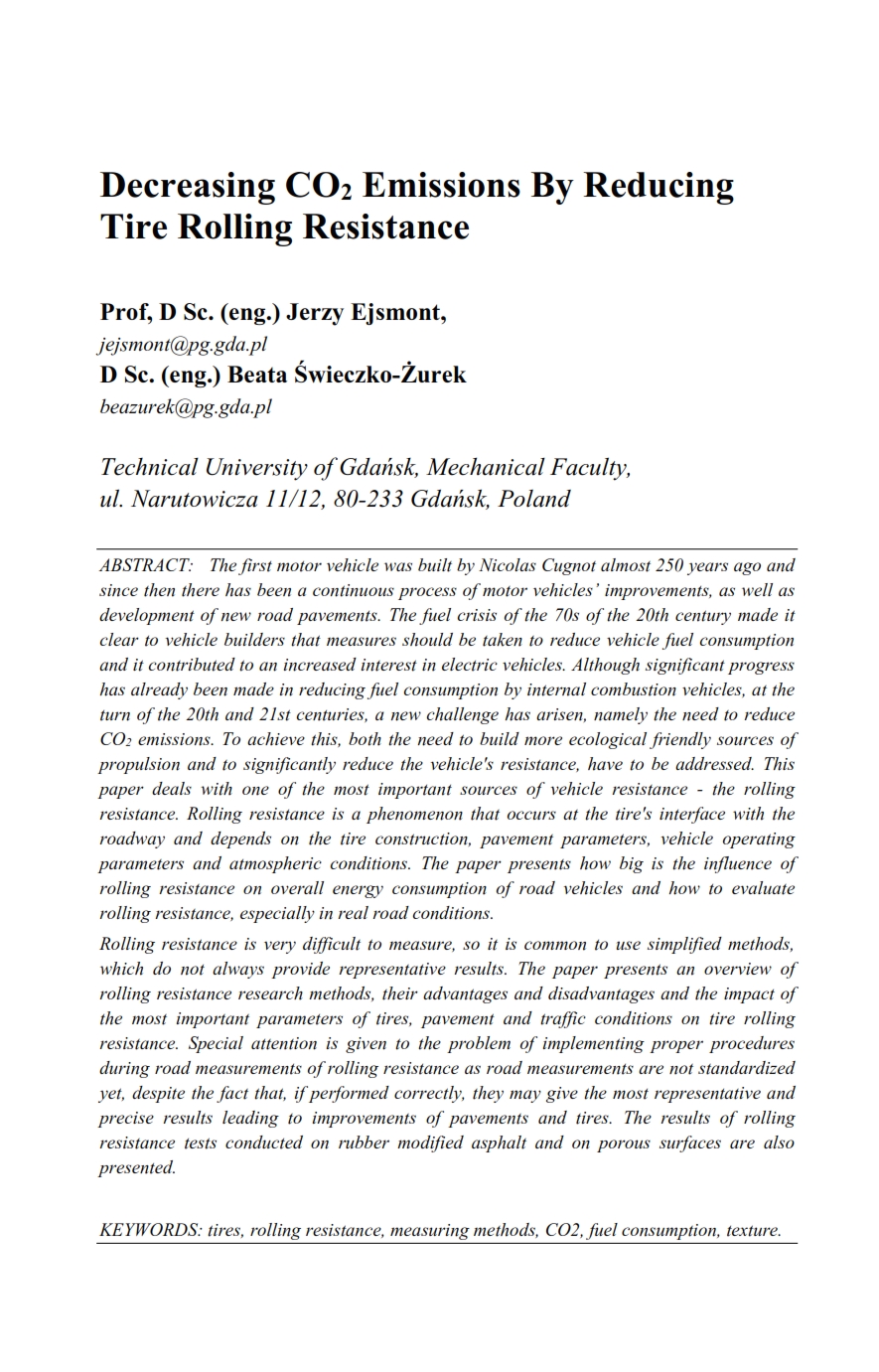
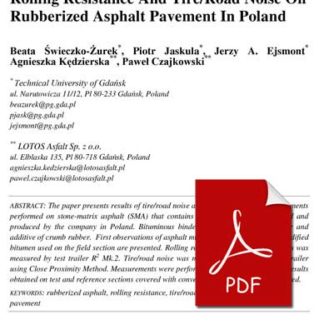
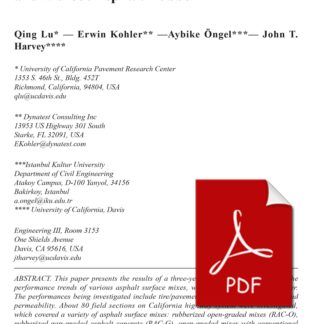
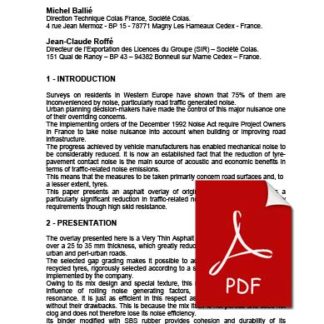


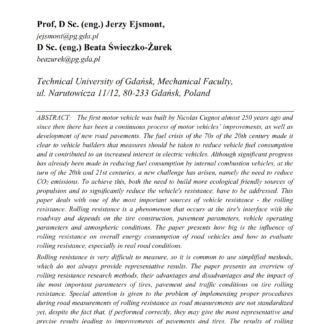
Reviews
There are no reviews yet.